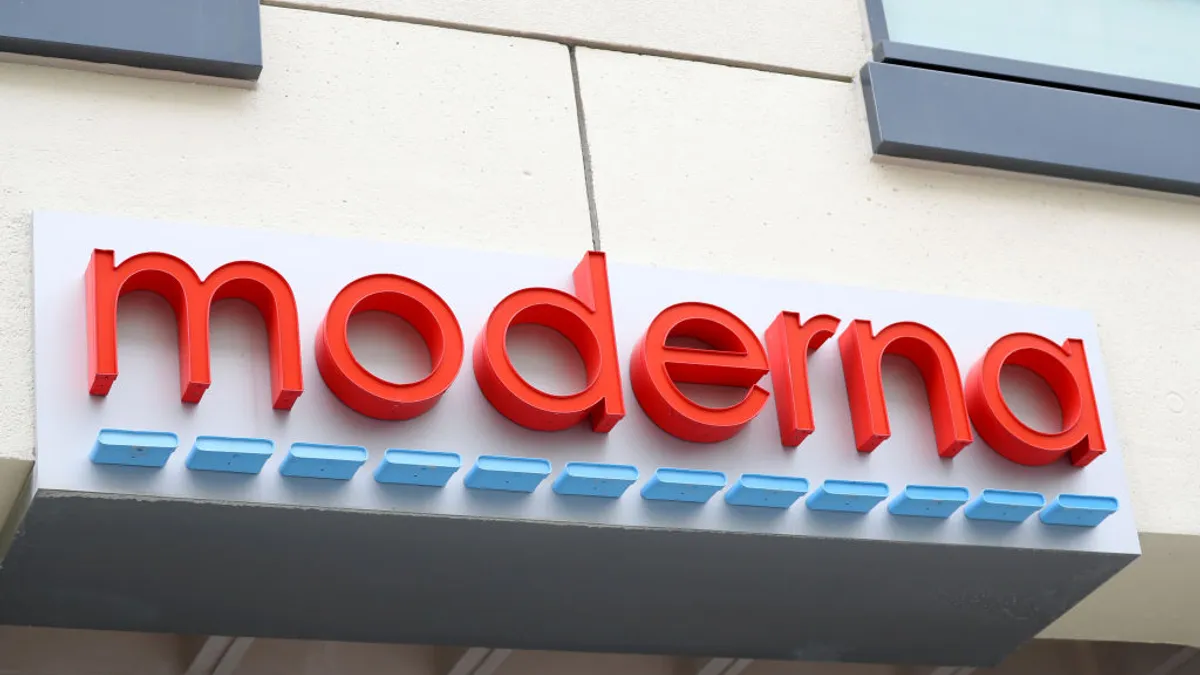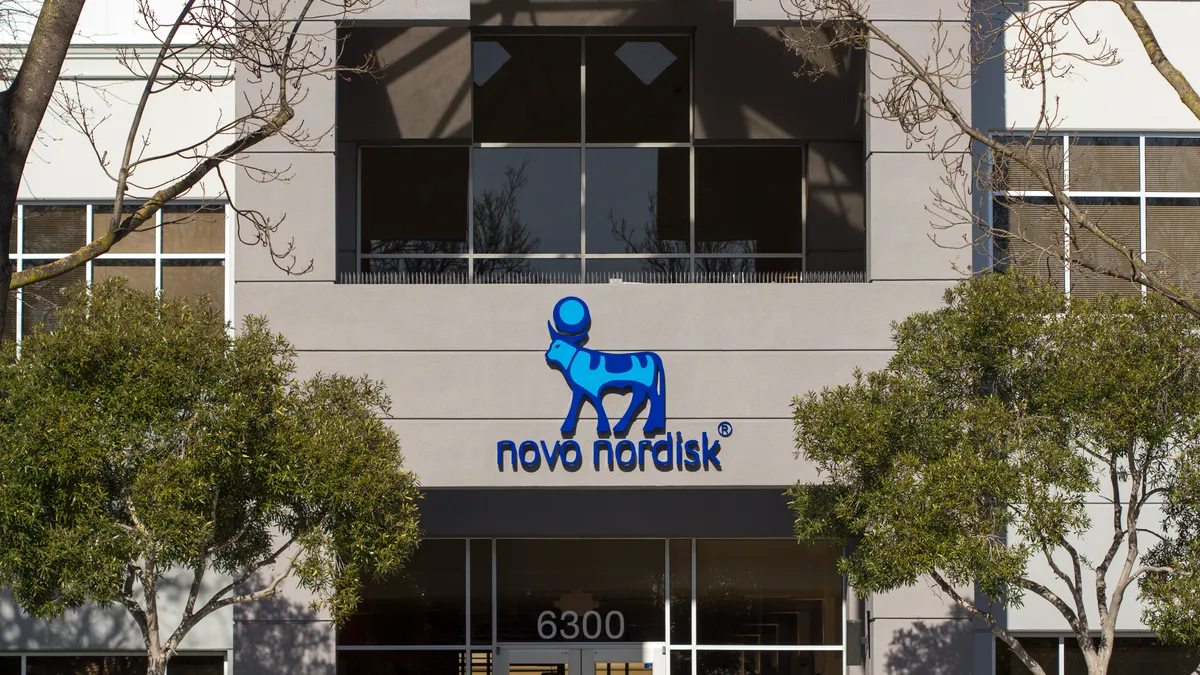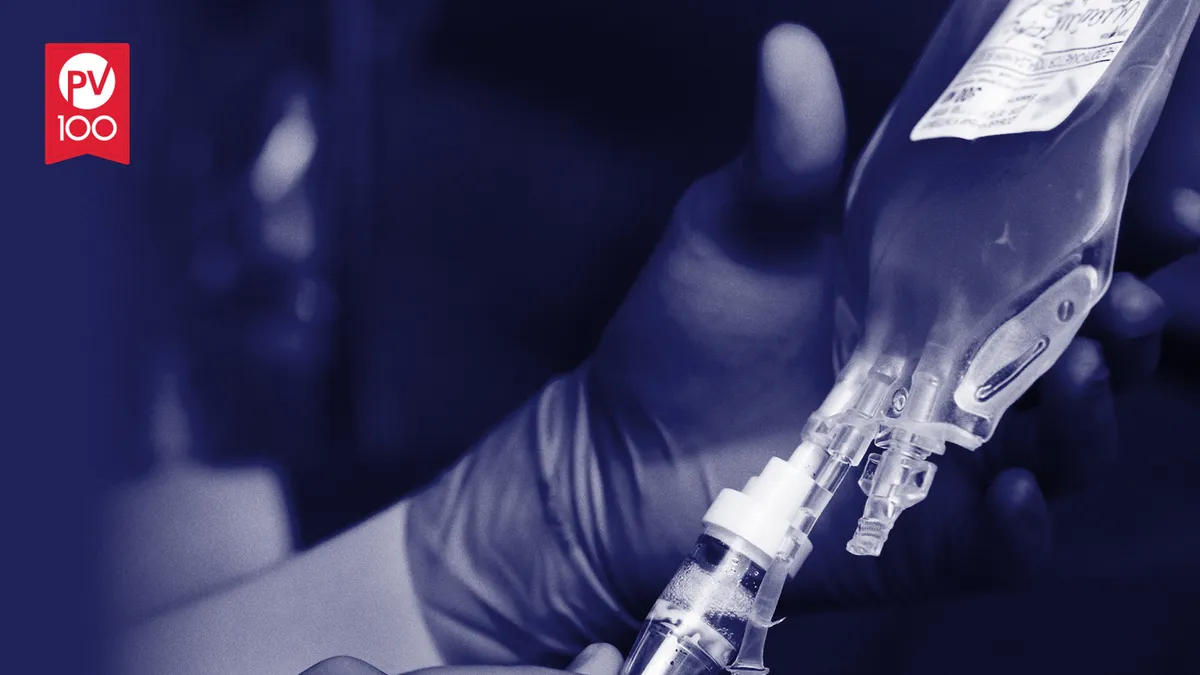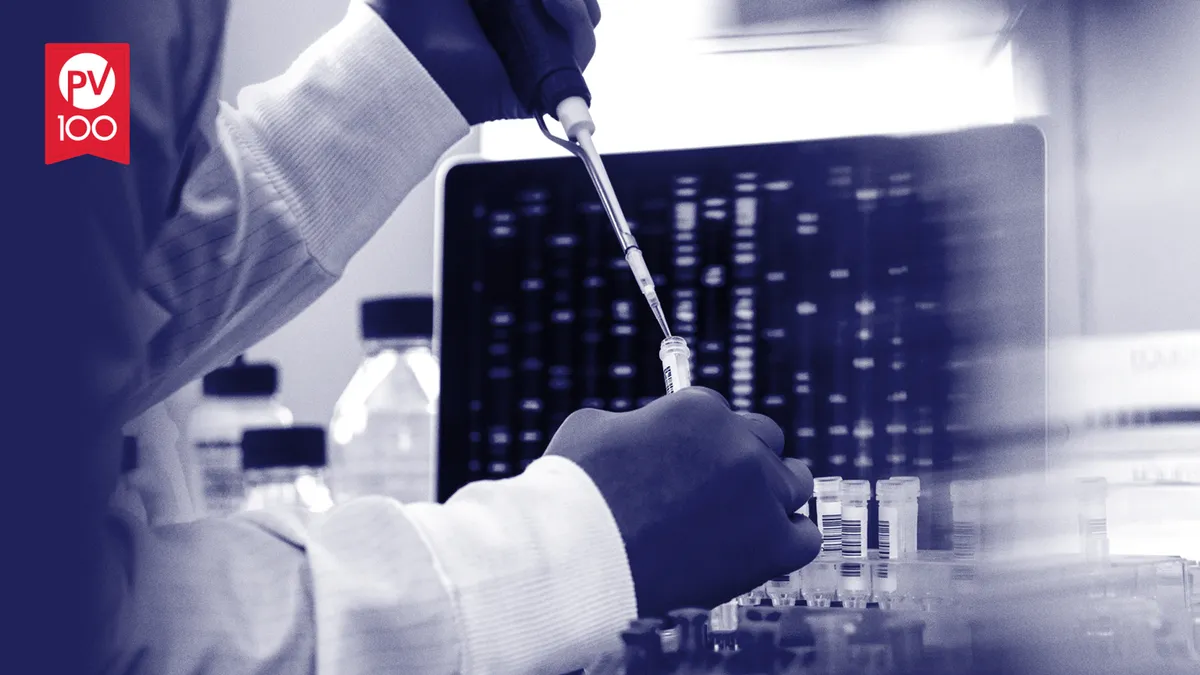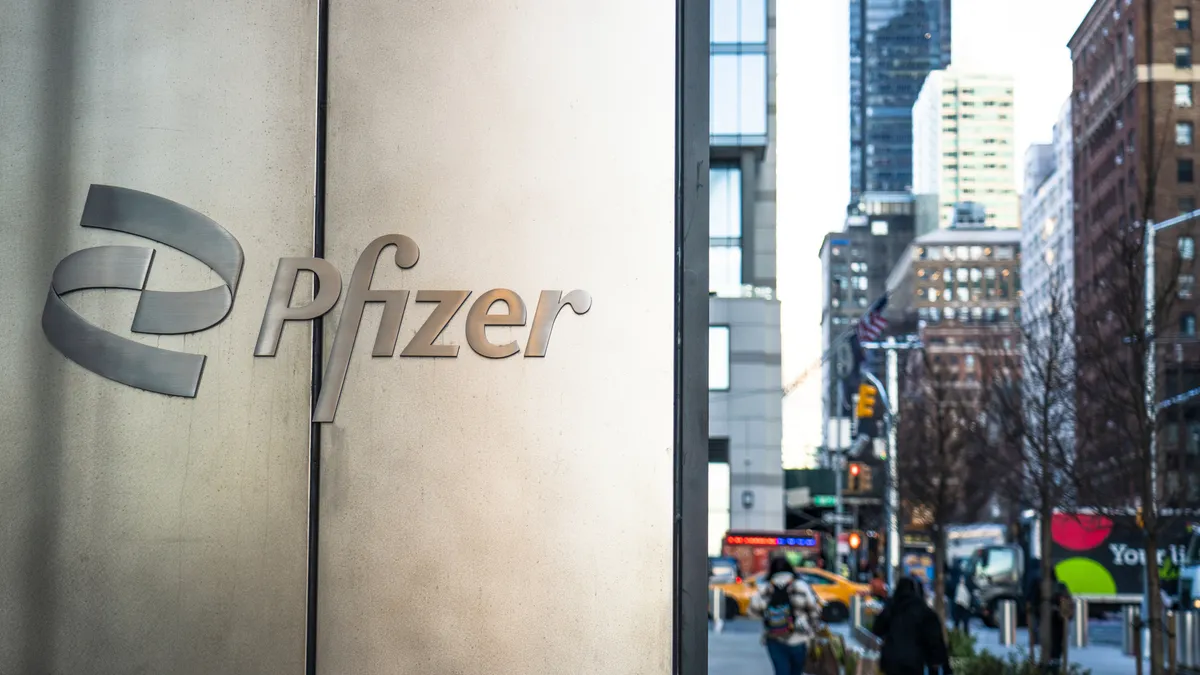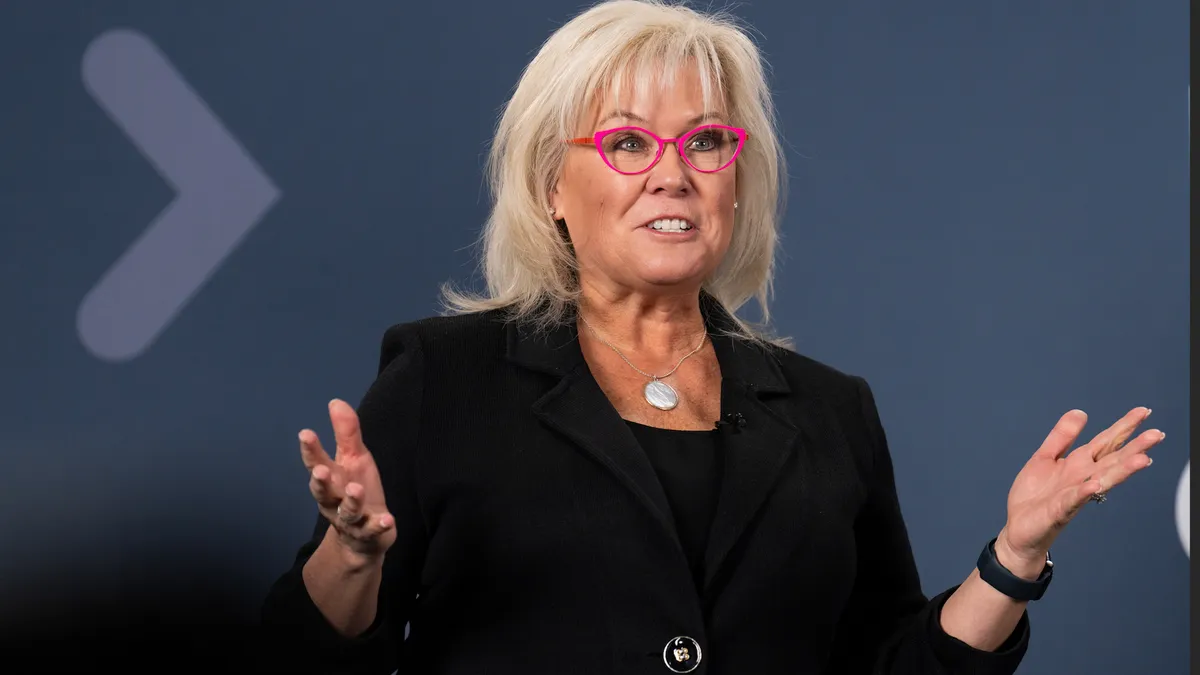The breakthrough mRNA technology behind the world’s first approved COVID-19 vaccines now occupies an important corner of the biopharma pipeline from cancer to rare diseases, and clinical leader Moderna is revving up for its next big moves.
With 48 mRNA programs from preclinical to phase 3, Moderna stands out among competitors in a field decades in the making. The need for COVID vaccines — which also include Pfizer and BioNTech’s Comirnaty — were a trial by fire for mRNA technology, and now Moderna is using those tools to bring about a wave of new therapies.
One of the biotech’s most prominent mRNA hopefuls is the individualized neoantigen therapy, or INT, program with partner Merck & Co. for patients with high-risk melanoma. The companies announced in late 2023 the beginning of a late-stage trial in combination with Merck’s blockbuster Keytruda following positive mid-stage results — and Moderna has an additional late-stage INT study in patients with lung cancer, also in combination with Keytruda.
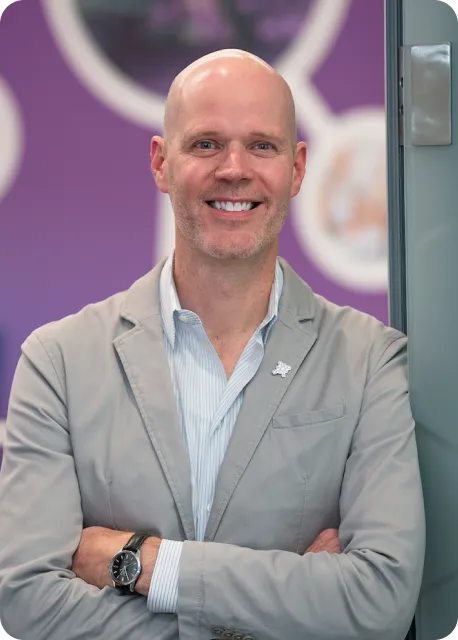
For cancer and rare diseases, mRNA could take the industry in a new direction, according to Dr. Kyle Holen, head of development, therapeutics and oncology, at Moderna.
Here, we spoke with Holen about how Moderna has leveraged success with the COVID vaccine into an mRNA pipeline that’s bubbling with potential for new indications beyond infectious disease.
This interview has been edited for brevity and style.
PHARMAVOICE: How has Moderna’s success with the mRNA COVID vaccine influenced the pipeline or how you run your department?
KYLE HOLEN: COVID opened the door not only to Moderna but to all companies that work on mRNA therapies. It showed the world that mRNA is the next wave of novel medicines, and that COVID proof of concept has trickled down into almost everything we do.
“I think we're just scratching the surface of mRNA’s potential. I know this is bold, but I believe that the cure for cancer is based on mRNA technology.”

Kyle Holen
head of development, therapeutics and oncology, Moderna
As an example, our cancer program, INT, now not only uses the same mRNA technology that we use for COVID, but uses that same lipid nanoparticle that we use for the vaccine. And because of that, we have safety information on over a billion people who are treated with the vaccine. There has never been an oncology drug in the world that has a billion patients’ worth of safety information. It's just amazing how much we've learned and grown and developed as a company based on everything that we've learned from that COVID experience.
When can we expect the next trial results and eventually approval in the INT program?
We have now initiated two randomized pivotal phase 3 studies, one in melanoma, one in lung cancer. We hope to have more opening soon in 2024, and we are currently in negotiations with regulators about the data package that would support a potential market authorization or an approval. We don't have dates or times — all we have is a mission to help people with melanoma as soon as possible. So we're doing our best to get what we think are really impactful medicines to patients as fast as we can. And we're doing that in partnership with regulators and our colleagues co-developing it with us at Merck.
Beyond the COVID-19 vaccine, what's been holding mRNA back from major commercialization?
Two things have held it back. One [is that] in the lab it is very unstable. If it's exposed to air, it breaks down. If it's in circulation, it breaks down immediately. It's very, very difficult to have an mRNA that's stable enough to actually create a protein. That's essentially what we're doing with mRNA — the mRNA itself is not helping people directly. What it's doing is allowing the cells to translate a protein. It is a protein that's doing all the action and the work inside the cell. But the mRNA just doesn't last long enough for the protein to be translated.
The other is that we need to get the mRNA into cells. All of this translation into proteins happens inside the cell. So you have to have a stable mRNA that can get inside the cell. We have done two things at Moderna, and we’ve focused intensely on these two things. One is we've created an mRNA that's more stable and easier for the cell to read and translate into proteins. And secondly, we've encapsulated the mRNA into a lipid nanoparticle. That lipid nanoparticle allows the mRNA not only to be protected, but also to enter the cell, where it's then released and translated into proteins.
Where are we in the timeline for mRNA’s role in medicine today?
I think we're just scratching the surface of mRNA’s potential. I know this is bold, but I believe that the cure for cancer is based on mRNA technology.
We have exciting evidence of activity in autoimmune diseases. We have a program in cardiovascular disease that could help patients with heart failure. We have these rare diseases, not to mention the incredible number of vaccines that are in our pipeline, that seem to be working really well. Right now we're at 48 different mRNAs in the clinic, but over the next five years, we think it'll be almost 100 mRNAs in the clinic. It's probably expanding faster than what Moderna can expand.
From 48 to 100 ––– that’s a big jump ahead of Moderna’s competitors. How do you know when to collaborate and when to compete?
We are fully partnered with Merck. It's not a race with Merck, because we're in the race together and we both want it to win. If that happens to be the Merck and Moderna team that gets to the patient at the fastest rate, [or] if that happens to be the BioNTech team that gets to the patient faster, great. Because in all scenarios, whoever gets there fastest, the patient always wins. We want to make sure that life saving treatments get to the patients as fast as possible.
There's such intense focus at Moderna. Everything we do here is mRNA. It's incredible what you can do when you have that focus, and it allows Moderna to have these technological advances such that we're getting ahead of the competition. And we're creating a moat between us and everybody else who's just dabbling in mRNA research. I really believe with our almost 100 programs that we'll have in the next five years, the learnings that come out of all these programs will put us even further ahead of the competition down the road.
What do you think the competitive landscape of mRNA therapy will look like in the future?
I want to be in a position where there's a ton of competitors, because the rising tide lifts all boats. Someone came to me and said, aren't you worried about biotech and everything that they're doing with mRNA? And that they're going to beat you? And I said, no. I'm actually glad they are successful, because what it shows the world is that we're all on the right track. If it were just Moderna, people would think we’re just a fluke. But when you have companies like Gritstone, BioNTech, Pfizer and others that are all successful at this technology, then people start realizing this is real. And it gives more weight to the work that we do at Moderna.
The COVID vaccine was your first commercialized product under wild circumstances. What is Moderna going to have to do to enter the market with mRNA therapies using a more traditional pathway?
The way we were successful with COVID is not going to be the same way we're going to be successful with RSV, or flu, or INT or with our rare disease programs. Every program is unique. And every program has unique challenges. And we will learn from all those unique programs and challenges and become a company that's prepared for all the new programs coming down our pipeline.



